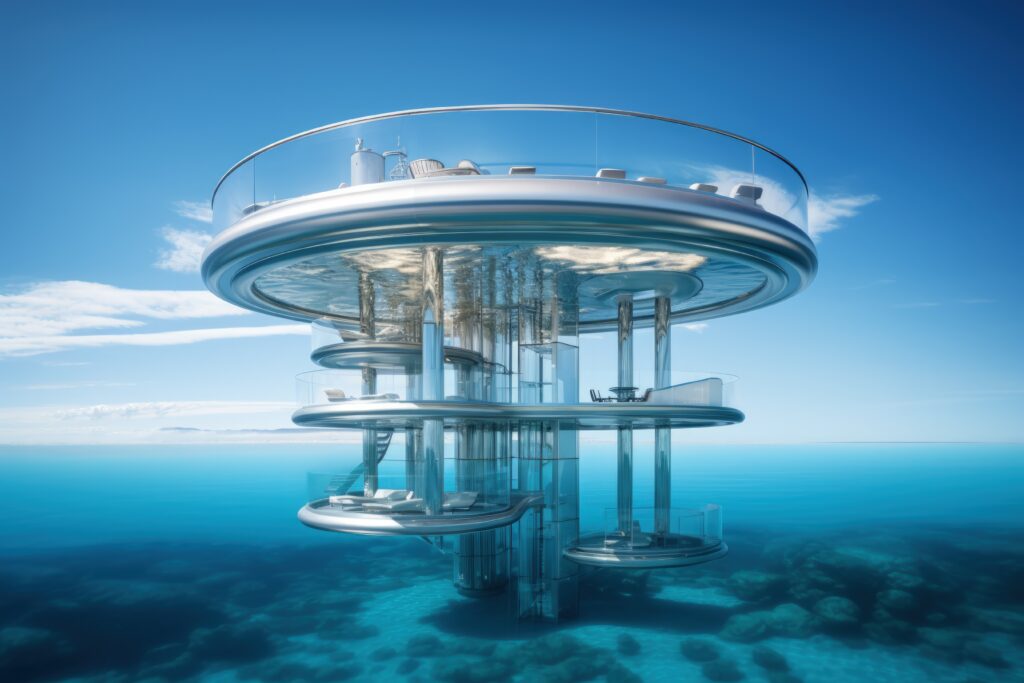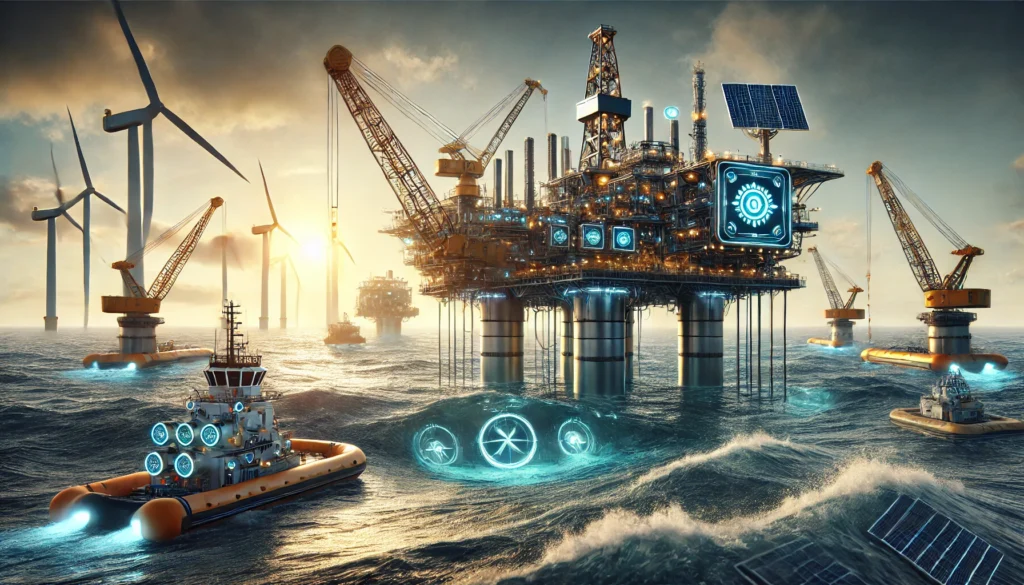Introduction
Deep offshore technology has changed the game and built valuable inventions for exploring and harvesting from the ocean’s depths. This technology has improved in engineering, robotics, and automation, therefore the risks associated with offshore exploration have drastically reduced, along with its cost and ecological impact. This technology is an indispensable constituent of the world’s energy market from oil and gas drilling to underwater construction and renewable energy initiatives.
If you are curious about how deep offshore operations work or the innovative technologies changing the industry, this article will summarize it all. Moreover, If you learn more about other technologies and AI advancement than Click here.

Understanding Deep Offshore Technology:
Deep offshore technology refers to new engineering methodologies and scientific methods used to explore, extract and manage resources hidden in the ocean depths. This technology covers an area up to 500 meters (1640 Feet) deep. The work done in this field is;
- Subsea drilling and sea production system.
- Advance underwater robotics systems.
- Remote-operated vehicles (ROVs) and autonomous underwater. vehicles (AUVs).
- Floating production, storage capacity, and offloading units (FPSOs).
- Renewable energy solutions such as offshore wind and tidal energy.
While searching for new resources around the world and researching them, many companies are investing in deep seek technology which is helping to explore new reserves and develop alternative resources.
Key Innovations in Deep Offshore Technology
1. Subsea Drilling and Well Technology
Deep offshore technology is playing a very important role in sea exploration. This technology is bringing new innovations in this field. It improves sea safety measurements, which reduces oil spills and environmental damages. Some work is done in this field is as follow;
- Managed pressure drilling (MPD): This technique is to control the drilling risk and reduce drilling pressure.
- Dual gradient drilling (DGD): This is a method that reduces seabed conditions to improve the efficiency of deep sea drilling.
- Smart drill bits: Smart drill bits with the help of AI powered drill bits that optimize performance and minimize downtime.
2. Floating Production Systems In Deep Offshore Technology
Traditional Offshore Deep seek platforms are not suitable for deep water operations therefore, companies have started using floating production systems which is improving their deep water operation. Some of Major work is as follows;
- FPSOs (Floating Production, Storage, and Offloading units): These are huge vessels that can help extract oil from deep water and process or store it in tankers.
- Tension Leg Platforms (TLPs): Tension leg Platform is also called extended Leg Platforms where oil and gas can be extracted with tension cable anchored where its extraction is stable.
These technologies help companies in improving their drilling efficiency and Oil and Gas extraction.
3. Autonomous Underwater Vehicles (AUVs) In Deep Offshore Technology
Deep offshore exploration relies on robotics or AI advancement to reduce risk measurement and make work efficient.
- It improves pipeline inspection and maintenance.
- It explores seabed exploration.
- It monitors the environment.
- It provides emergency response in case of malfunctions and leakages.
AI integration helps make data collection and operations easier while reducing human error.
4. Renewable Energy Solutions In Deep Offshore Technology
Another important work of technology is that it is expanding the renewable energy traffic and is also a way of improving sustainability. There are some promising innovations in it;
- Floating offshore wind farms: This technology provides power to wind turbines installed in deep water where the wind is strong.
- Tidal and wave energy: It generates electricity by utilizing the natural activity of the ocean.
- Subsea energy storage systems: It stores the energy or electricity generated from excess water which can be stored for future use.
This new advancement is combined with and improves the clean energy transition effort across the world.
The Future of Deep Offshore Technology
As soon as technology evolves, the deep offshore industry is also expanding its reach by bringing advancement. There is some new innovation;
- With the help of AI-Driven predictive technology, offshore equipment can be maintained.
- 3D printers can improve underwater repair.
- Offshore wind energy can achieve hydrogen production.
- With the help of Carbon capture and storage (CCS), it will help in reducing emissions.
AI will develop even more in the future, due to which deep offshore technology will become more sustainable, which will improve work efficiency and reduce costs.
Challenges in Deep Offshore Technology
Although there have been advancements in technology that have reduced risks, deep offshore still faces many challenges, including some of that are;.
- High operational costs: Infrastructure development and maintenance of deep offshore costs a lot which increases the expenses of companies.
- Environmental concerns: Oil spills are a big issue for climate change and habitat destruction.
- Extreme weather conditions: Hurricanes and rough seas can disturb the work of deep offshore.
- Technological limitations: There is a lot of area in the deep sea which has not been explored for which there is technology, hence there is a need to further improve the technology.
These challenges need to be made manageable. Researchers, government and industries need to work together to find a solution to these challenges but safety measurement and sustainability need to be made manageable.Learn more about the future of renewable energy here.
Conclusion
Deep offshore technology is leading innovation in the energy market today, making it possible from ocean depth to explore and extract resources and species. New developments like deep water drilling robots, oceanic renewable energy, and floating production systems are making the industry more cost-effective, safe, and environmentally friendly.



